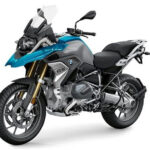Many cyclists considering an e-bike wonder, “Will it be easy to pedal if I run out of battery or want to ride without motor assistance?” This is a valid concern, especially for those interested in commuter or mountain bike styles, known for their robust build and wider tires. Let’s delve into what makes an e-bike pedal-friendly when you’re relying on your own power.
Motor Resistance: What to Consider
When it comes to motor resistance, mid-drive motors are generally favored. You might be wondering if different motor manufacturers have varying levels of resistance when disengaged. While individual perceptions can vary, feeling the resistance directly can be insightful. A simple test involves turning the cranks by hand, ideally with the chain removed. If that’s not feasible, lifting the rear wheel allows you to assess the drag.
Anecdotally, older Bosch motors and some Shimano models have been reported to have a resistance comparable to a slightly rusty chain. Yamaha motors might feel akin to basic pedals, while Brose (used in Specialized bikes) can feel similar to well-maintained pedals needing lubrication. However, unless you’re meticulously focused on drivetrain efficiency, the motor drag in most modern e-bikes, excluding older Bosch systems, is unlikely to be a significant hindrance in everyday pedaling.
Beyond Motor Drag: The Real Factors Affecting Pedal Bikes
The perceived difficulty in pedaling an e-bike often stems from factors beyond just motor resistance. These are inefficiencies that we might overlook because of the motor assist but become apparent when pedaling without power.
Tire Resistance
Fat, grippy tires, common in commuter mountain bike styles for enhanced ruggedness and comfort, inherently increase rolling resistance. Lower tire pressures, often used for better comfort and traction, further amplify this effect. While these tires are beneficial for their intended purpose, they do demand more effort when pedaling compared to narrower, higher-pressure tires found on traditional road bikes.
Riding Position and Ergonomics
E-bikes often feature a more upright riding position focused on comfort. Over time, riders may further adjust their e-bike setup for even greater comfort, such as softer suspension. Switching from an e-MTB to a regular kids’ bike highlights the contrast – the kids’ bikes often feel more agile due to their aggressive riding positions and significantly lighter weight (an e-bike can be around 45% heavier, which is substantial).
Weight
The added weight of the motor, battery, and reinforced frame of an e-bike is a crucial factor. This extra weight, often significantly more than just the motor and battery components might suggest, contributes to increased inertia and effort needed for acceleration and climbing, especially when pedaling without motor assistance.
Compensating and Understanding Pedal Effort on Pedal Bikes
To better understand and manage the pedal effort on your e-bike, consider adjusting the assist levels. Setting the eco mode to a lower assist level, such as 50%, can provide a sensation closer to pedaling a highly efficient regular bike.
For perspective, riding with a 50% assist level and tires properly inflated can yield impressive ranges, like 80 km on rail trails. This demonstrates that a portion of the energy is indeed used to overcome motor drag and the inherent inefficiencies from tire choice and riding ergonomics.
Conclusion: Easy to Pedal? It Depends on the Pedal Bike Setup
In conclusion, while motor resistance is a factor, especially with older models, the ease of pedaling an e-bike, or “pedal bike” in the context of unassisted riding, is more significantly influenced by tire choice, riding position, and overall weight. Understanding these factors will help you choose and set up your e-bike to best match your pedaling preferences, whether you’re using the motor or relying on your own power.

